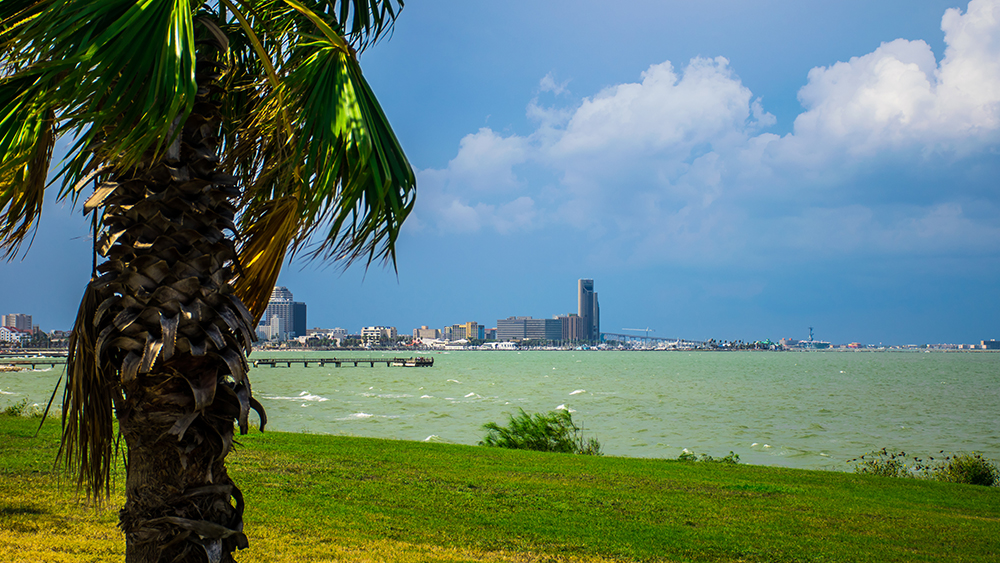
As carbon dioxide (CO2) levels in the Earth's atmosphere increase, so do efforts to safely lock away the greenhouse gas.
A Texas A&M University faculty team is working with Talos Energy, Howard Energy Partners and The University of Texas Bureau of Economic Geology to uncover information needed for CO2 sequestration or storage in saline or saltwater aquifers in the Texas coastal bend.
Working in partnership with the Port of Corpus Christi Authority (POCCA), the project’s goal is to drill an exploratory well 9,000 feet deep in San Patricio County, Texas, while recording practical drilling and scientific baseline information. Over $2 million in federal funding will cover the research, equipment and other project costs.
The financial support is part of a grant from the Department of Energy’s (DOE) Carbon Storage Assurance Facility Enterprise (CarbonSAFE) program, which facilitates the eventual injection and monitoring of large-scale CO2 storage in the United States. These types of CO2 storage trials have been funded by the DOE since 2009. This project is part of CarbonSAFE Phase II.
According to the United States Environmental Protection Agency, a gasoline-powered car averaging 22 miles per gallon will emit about one metric ton of CO2 for every 2,500 miles it is driven. The Earth could easily recycle or absorb these emissions with plants and oceans. However, the planet can't handle the 35+ billion metric tons of CO2 produced yearly from worldwide industrial manufacturing and other commercial applications.
The DOE program is exploring ways to lessen this impact on our atmosphere.
"Geoscience samples and other data gathered from instruments in this well will answer questions on the geological condition of the aquifer," said Dr. Thomas Blasingame, Robert L. Whiting Professor in the Harold Vance Department of Petroleum Engineering. "We're looking at factors such as the thickness of the rock, how strong it is and how porous it is — as well as the mechanical integrity of the reservoir seal. We aim to maximize CO2 storage and ensure containment of the CO2 plume."
The Texas A&M faculty team includes Blasingame, Dr. Sara Abedi, Dr. Siddharth Misra, Dr. Akhil Datta-Gupta, Dr. John Lee and Dr. Kan Wu from the petroleum engineering department; Dr. Arash Noshadraven from the Zachry Department of Civil and Environmental Engineering; and Dr. Benchun Duan and Dr. Cameron Manche from the Department of Geology and Geophysics.
Blasingame said Talos Energy would work with the College of Engineering and the College of Arts and Sciences faculty, and the Bureau will partner primarily with Duan and Manche.
First, the researchers will compare the stratigraphic test well's data with the detailed public and near-public geoscience data from Talos Energy, Howard Energy Partners and the Bureau. The plan is to create an overall geological description to define the geological samples, evaluate the subsurface aquifer's CO2 injection or storage capacity and model the shape and size of the injected CO2 plume as it settles into the aquifer.
The Texas A&M team will also perform a risk assessment to evaluate the potential for mechanical and chemical changes in the surrounding rock. Simulations must show that a significant volume of CO2 can be safely injected and stored in the saline aquifer over several decades and verify with modeling that the CO2 is permanently stored with no leakage for even longer. At that point, Texas A&M will provide guidance and support for the next phase project, which will focus on constructing the actual injection and monitoring wells in San Patricio County.
"This project and others like it offer the opportunity to learn from gathered and existing data," Blasingame said. "And that opens a path for the more detailed research needed to answer questions thoroughly and even come up with questions not previously considered."
The prospects are hopeful. Talos Energy and Howard Energy Partners have already signed an agreement with the POCCA to lease the initial 13,000 acres for later-stage sequestration storage.
Still, nothing is being left to chance. The teams will research both big and small aspects of the project to work toward DOE's goal of ensuring the aquifer dimensions. Faculty will investigate any regional mineralogical issues that could impair normal water-liquid CO2 solubility.
"Several smaller-scale regional carbon sequestration projects sponsored by the U.S. Department of Energy prove that long-term storage is possible," said Blasingame. "A safe and economically successful project here (and in similar projects) will enable large-scale commercial development of carbon storage in the United States."